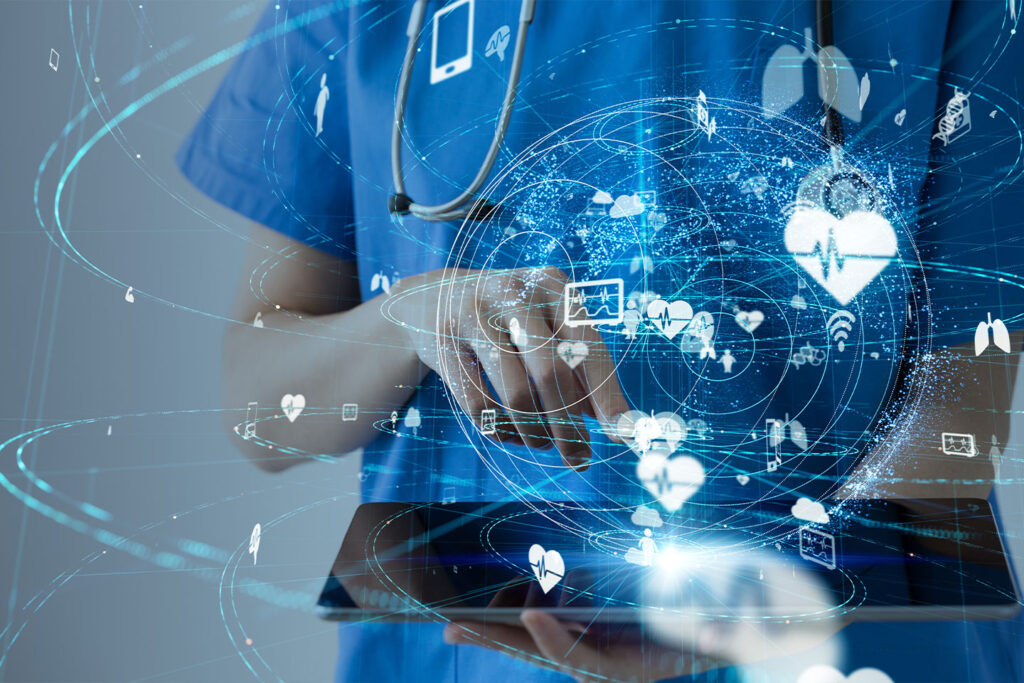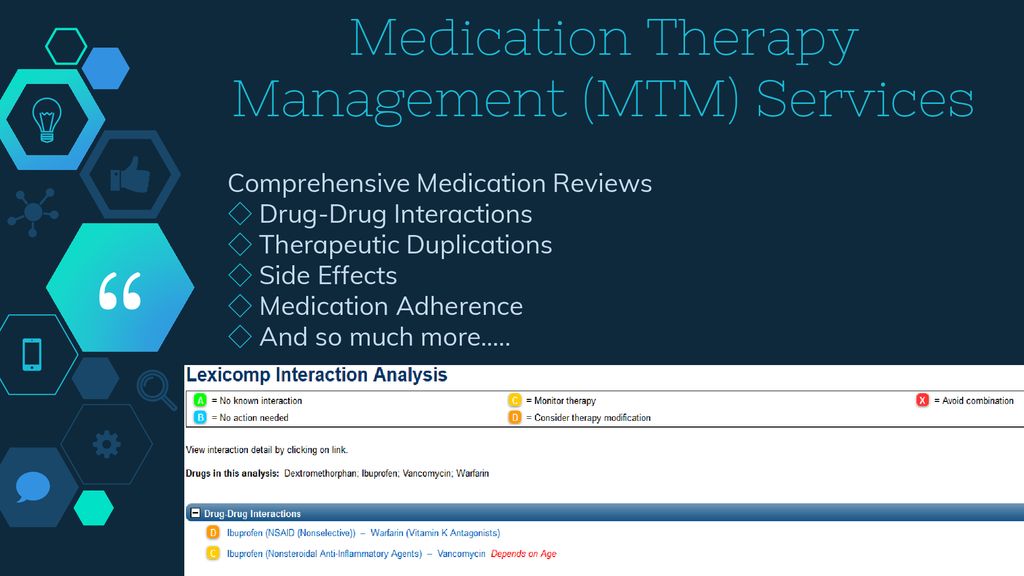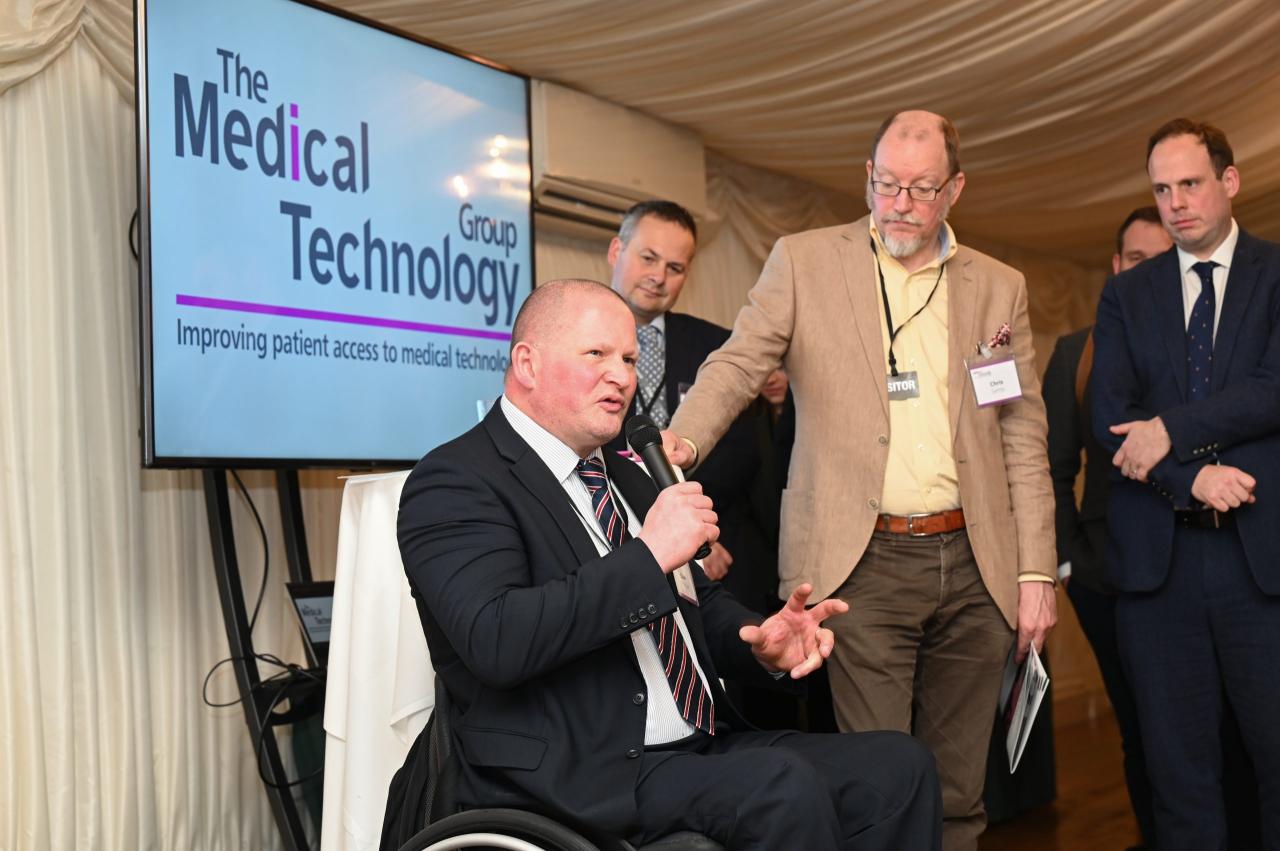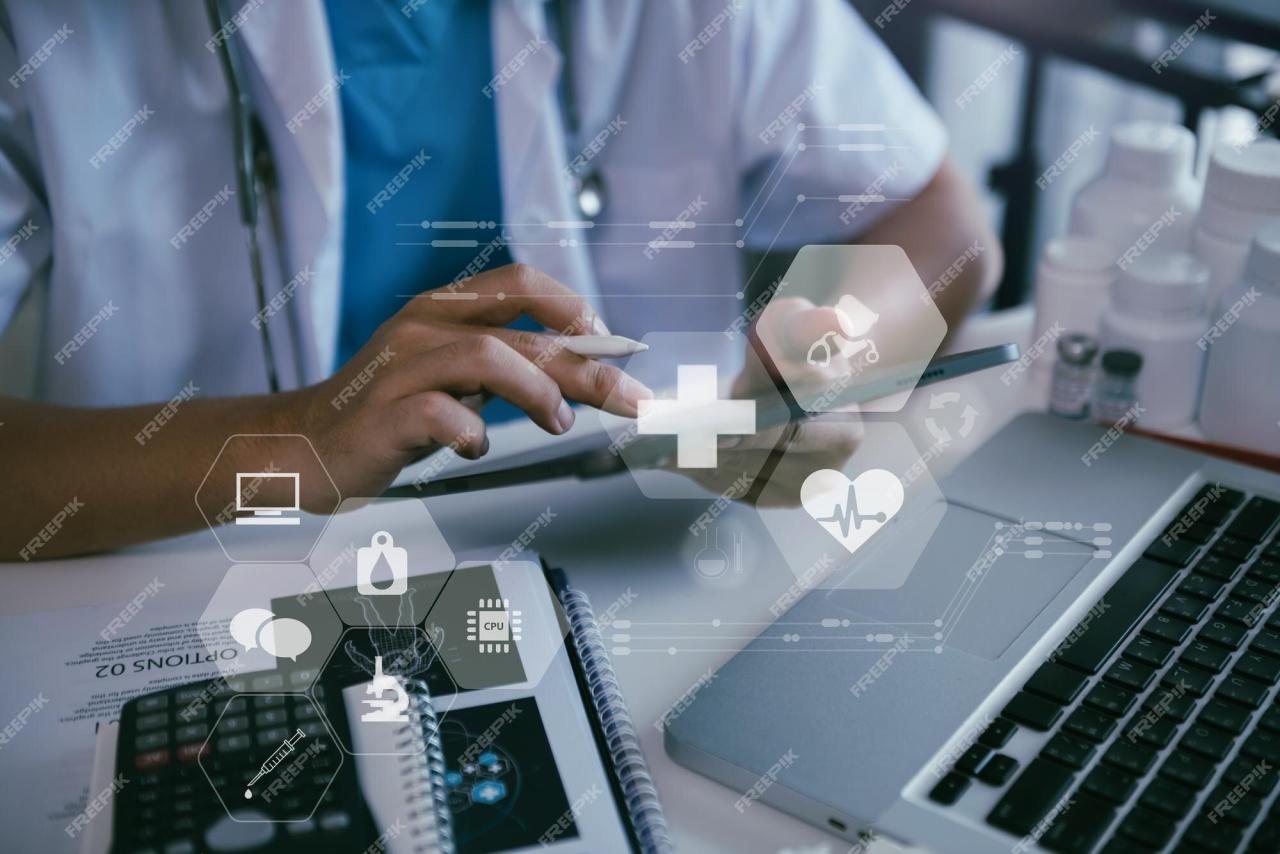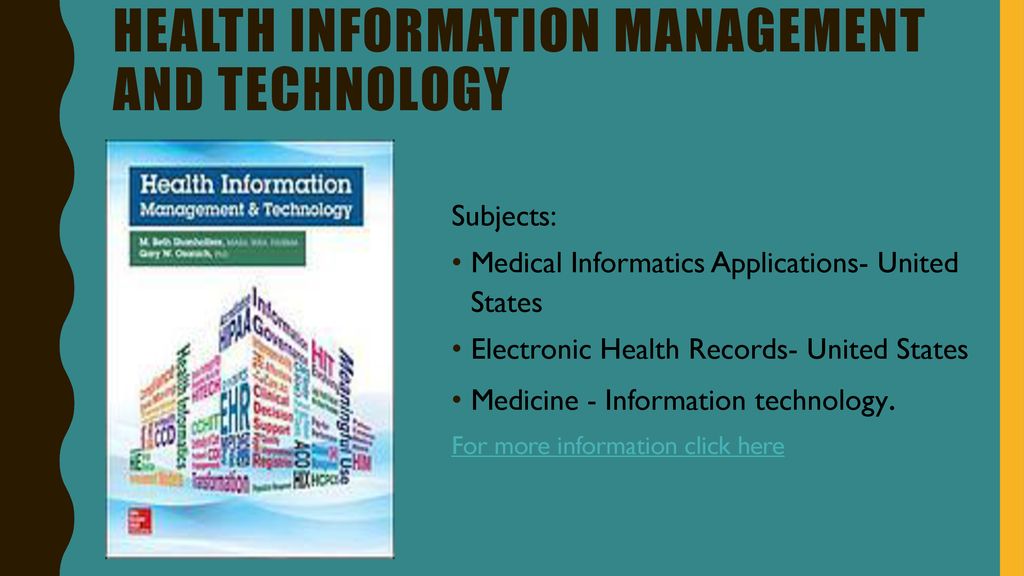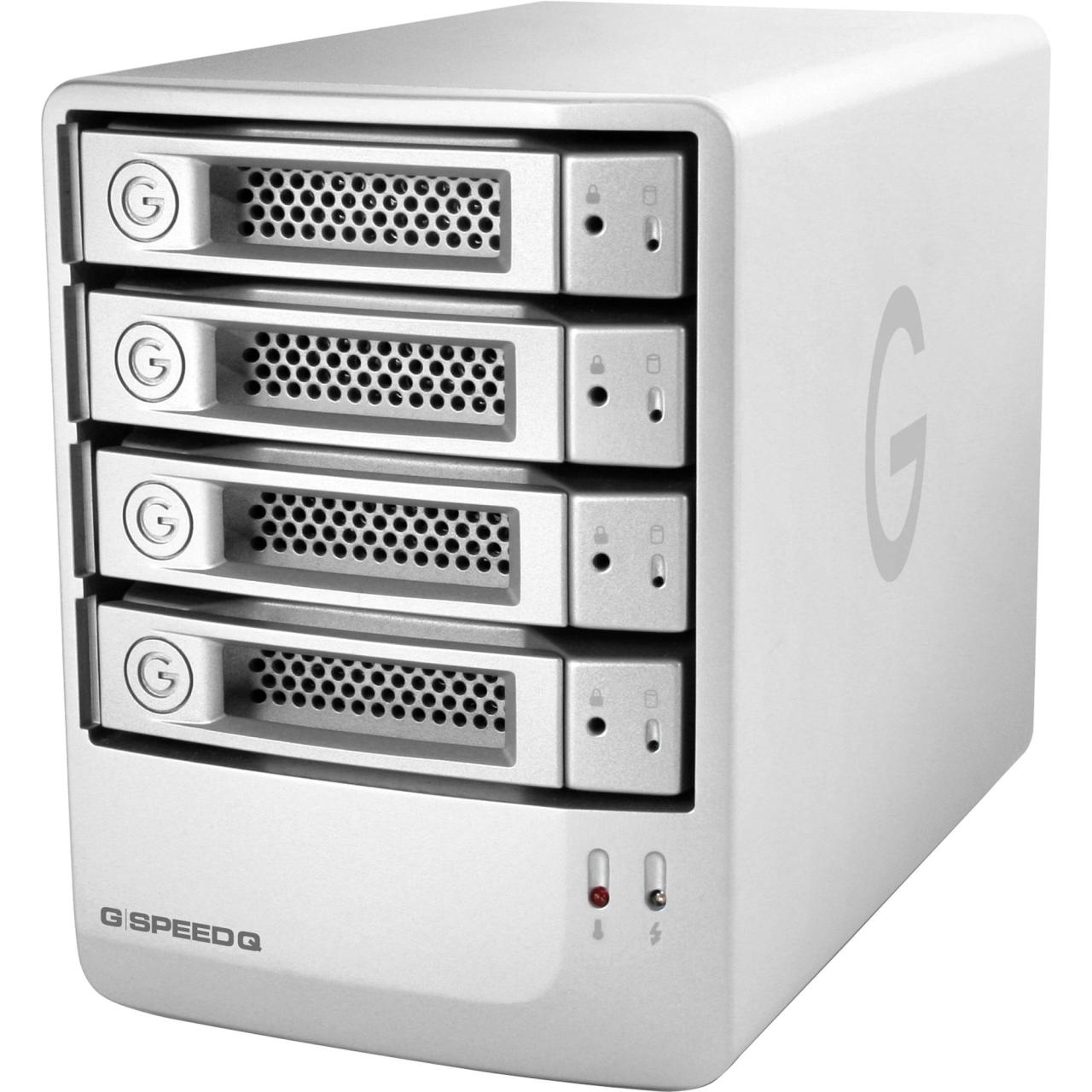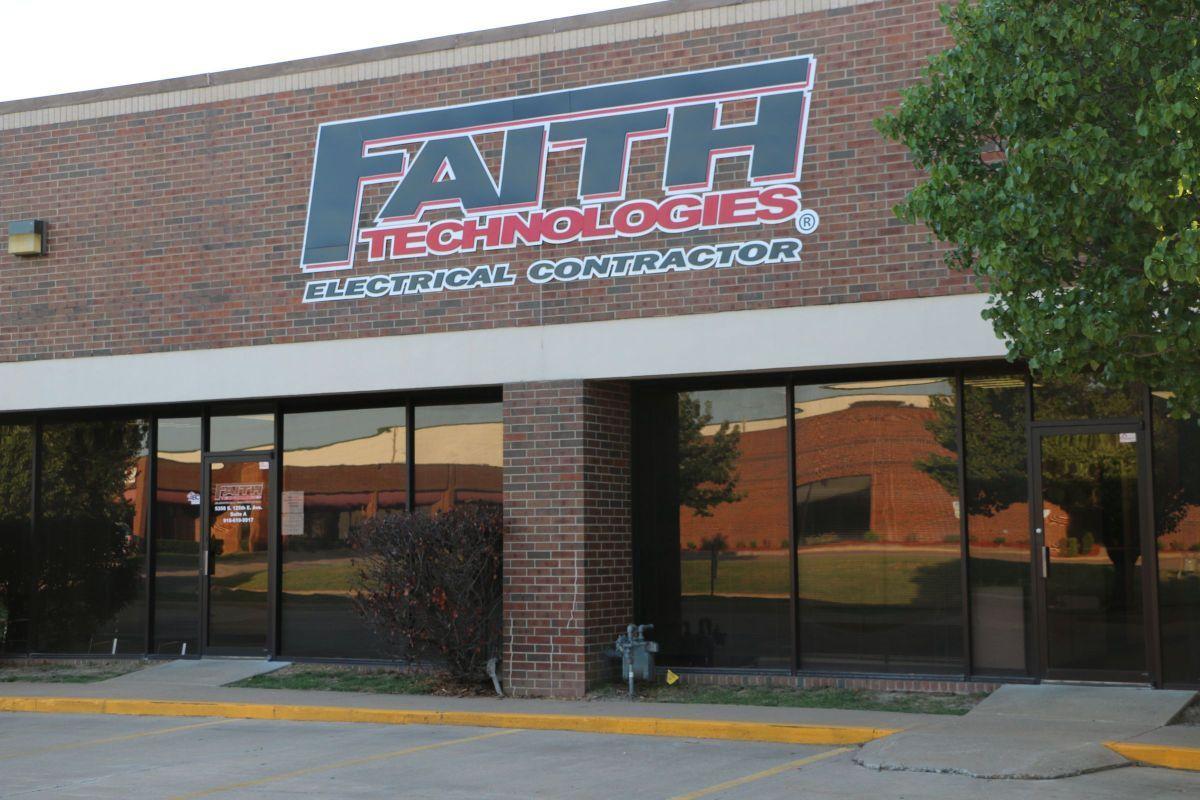Examples of Disruptive Technology in Healthcare: Shaping the Future
Examples of disruptive technology in healthcare are not merely innovations; they are forces reshaping how we diagnose, treat, and manage health. These technologies, ranging from artificial intelligence to virtual reality, […]
Examples of disruptive technology in healthcare are not merely innovations; they are forces reshaping how we diagnose, treat, and manage health. These technologies, ranging from artificial intelligence to virtual reality, are fundamentally altering the healthcare landscape, offering unprecedented opportunities for improved patient care and efficiency. This exploration delves into the key examples, their impact, and the future they are shaping.
The healthcare industry has always been a breeding ground for innovation. From the discovery of penicillin to the development of sophisticated imaging techniques, technological advancements have revolutionized medical practice. However, the current wave of disruptive technologies is distinct, characterized by its exponential growth, profound impact on various aspects of healthcare, and the potential to redefine the very nature of medical care.
The Evolution of Healthcare Technology
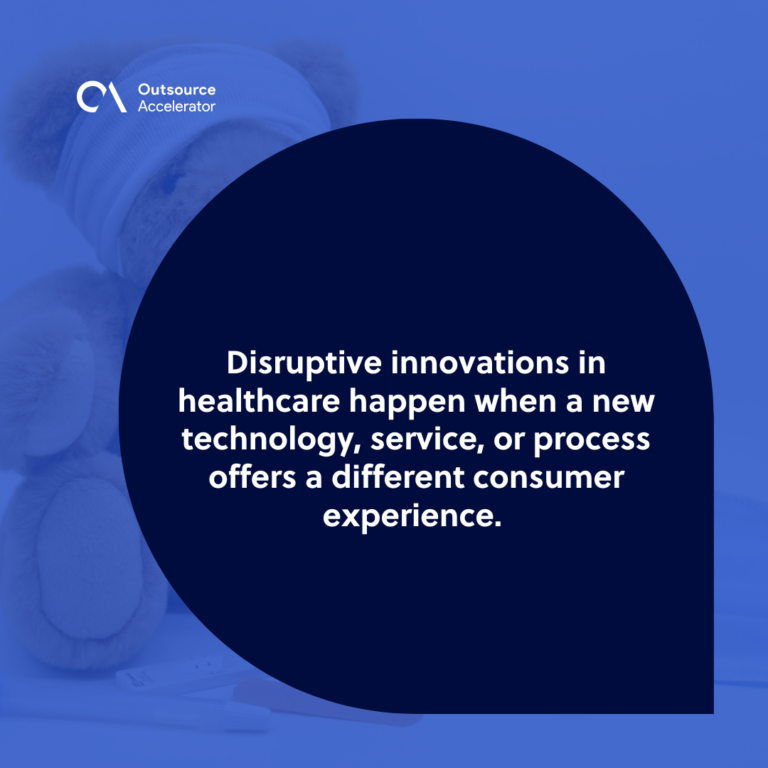
Healthcare technology has undergone a remarkable transformation throughout history, evolving from rudimentary practices to sophisticated innovations that have revolutionized the way we diagnose, treat, and manage health conditions. This evolution has been driven by a relentless pursuit of better healthcare outcomes, fueled by scientific advancements and technological breakthroughs.
The Dawn of Modern Medicine
The advent of the microscope in the 17th century marked a pivotal moment in medical history, enabling scientists to observe microorganisms and understand their role in disease. This discovery paved the way for the development of germ theory, which revolutionized hygiene practices and led to the implementation of sanitation measures that significantly reduced the incidence of infectious diseases. The invention of the stethoscope in 1816 provided a means to listen to heart and lung sounds, enabling doctors to diagnose and monitor patients more effectively.
The Era of Antiseptics and Anesthesia
The 19th century witnessed the introduction of antiseptics and anesthesia, transforming surgical procedures from agonizing experiences into safer and more tolerable interventions. Joseph Lister’s pioneering work in antiseptic surgery, using carbolic acid to sterilize instruments and surgical sites, drastically reduced the risk of infection and mortality during surgery. The discovery of ether and chloroform as general anesthetics enabled painless surgeries, allowing for more complex and longer procedures.
The Rise of Medical Imaging
The 20th century saw the emergence of medical imaging technologies, providing unprecedented insights into the human body. The invention of X-rays in 1895 allowed doctors to visualize bones and internal organs, revolutionizing diagnosis and treatment. The development of computed tomography (CT) scans in the 1970s provided detailed cross-sectional images, while magnetic resonance imaging (MRI) offered even greater resolution and specificity. These technologies have enabled early detection of diseases, more accurate diagnosis, and more targeted treatments.
The Digital Age of Healthcare
The digital revolution has had a profound impact on healthcare, ushering in an era of electronic health records (EHRs), telemedicine, and personalized medicine. EHRs have streamlined patient information management, improved communication among healthcare providers, and reduced medical errors. Telemedicine has expanded access to healthcare services, particularly in remote areas, while personalized medicine utilizes genetic information and other data to tailor treatments to individual patients.
The Future of Healthcare Technology
The future of healthcare technology holds immense promise for further advancements. Artificial intelligence (AI) is poised to revolutionize diagnosis, treatment planning, and drug discovery. Wearable devices and sensors are enabling continuous health monitoring and personalized lifestyle management. Advancements in gene editing and regenerative medicine offer the potential to cure diseases that were once considered incurable.
Defining Disruptive Technology in Healthcare
Disruptive technologies in healthcare are those that fundamentally alter the way healthcare is delivered, accessed, and experienced. These innovations challenge existing models and practices, often emerging from outside the traditional healthcare industry. They are characterized by their ability to create new markets and value networks, ultimately displacing established players.
Characteristics of Disruptive Technologies in Healthcare
Disruptive technologies in healthcare are distinct from incremental advancements, which simply improve existing methods. Key characteristics that define disruptive technologies include:
- Focus on Simplicity and Affordability: Disruptive technologies often prioritize accessibility and affordability, making healthcare services available to a broader population. For instance, telemedicine platforms offer convenient and cost-effective alternatives to traditional in-person consultations.
- Initial Inferiority in Performance: In the early stages, disruptive technologies may not be as sophisticated or effective as established solutions. However, they rapidly improve and evolve, eventually surpassing the capabilities of traditional methods. For example, early smartphone apps for monitoring blood glucose levels lacked accuracy compared to laboratory tests but have since become more reliable and widely adopted.
- Rapid Innovation and Adoption: Disruptive technologies are characterized by rapid development and widespread adoption. Their ease of use, affordability, and potential for improving patient outcomes contribute to their rapid diffusion within the healthcare ecosystem.
- Transformation of Healthcare Delivery Models: Disruptive technologies fundamentally change how healthcare is delivered. They empower patients to take a more active role in their health management, facilitate remote monitoring and diagnosis, and enable personalized treatment approaches.
Impact on Healthcare Stakeholders, Examples of disruptive technology in healthcare
Disruptive technologies have profound implications for all stakeholders in the healthcare ecosystem, including:
Patients
- Increased Access to Healthcare: Disruptive technologies, such as telemedicine and mobile health apps, expand access to healthcare services, particularly in underserved areas. They bridge geographical barriers and enable patients to connect with healthcare professionals remotely.
- Empowered Patient Engagement: Disruptive technologies provide patients with tools to actively manage their health. Wearable devices track vital signs, mobile apps facilitate medication reminders, and online platforms offer access to medical information and support communities.
- Personalized Healthcare: Disruptive technologies enable personalized treatment approaches based on individual patient needs and preferences. Genetic testing, precision medicine, and artificial intelligence algorithms allow for tailored interventions and improved outcomes.
Providers
- Enhanced Efficiency and Productivity: Disruptive technologies streamline administrative tasks, automate processes, and improve workflow efficiency. Electronic health records (EHRs), telehealth platforms, and data analytics tools empower providers to manage patient care more effectively.
- Improved Diagnostic Accuracy and Treatment Effectiveness: Disruptive technologies, such as artificial intelligence-powered imaging analysis and predictive modeling, enhance diagnostic accuracy and treatment effectiveness. They provide providers with data-driven insights to make informed decisions.
- New Opportunities for Collaboration and Innovation: Disruptive technologies foster collaboration between healthcare providers and other stakeholders, including technology companies and research institutions. This collaborative environment accelerates innovation and drives advancements in healthcare delivery.
Payers
- Cost Containment and Efficiency: Disruptive technologies offer potential for cost containment by reducing unnecessary hospital admissions, improving disease management, and enabling preventative care. Telehealth platforms, for example, can reduce the need for expensive in-person visits.
- Improved Health Outcomes: Disruptive technologies contribute to improved health outcomes by enabling early detection, personalized treatment, and proactive disease management. This translates into lower healthcare costs in the long run.
- Data-Driven Insights and Risk Management: Disruptive technologies provide payers with access to real-time data and analytics, allowing for better risk assessment and informed decision-making. This data-driven approach enables more efficient allocation of resources and improved population health management.
Examples of Disruptive Technologies in Healthcare
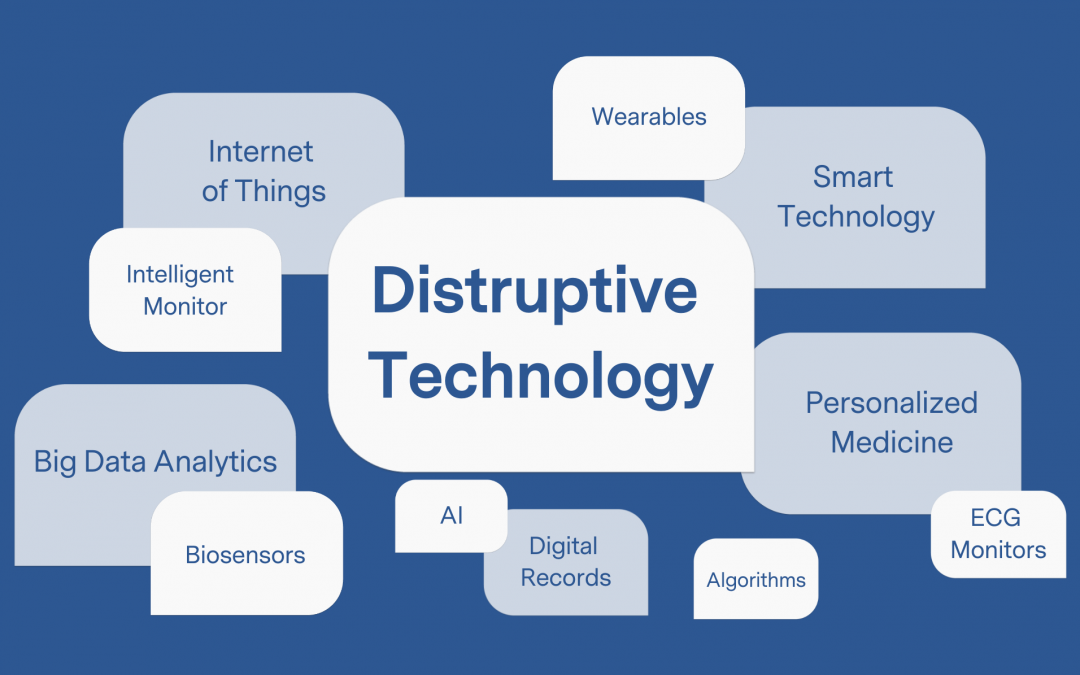
Disruptive technologies are transforming the healthcare landscape, driving innovation and improving patient care. These technologies are challenging traditional practices and introducing new ways to diagnose, treat, and manage health conditions. This section will explore some of the most impactful disruptive technologies in healthcare, examining their potential benefits, challenges, and future implications.
Artificial Intelligence (AI)
AI is revolutionizing medical diagnosis, treatment planning, and drug discovery by analyzing vast amounts of data and identifying patterns that humans may miss.
- Medical Diagnosis: AI-powered tools can analyze patient data, such as medical images, lab results, and electronic health records, to assist physicians in making accurate diagnoses. For example, AI algorithms can detect early signs of cancer in mammograms or identify potential heart attacks from electrocardiogram (ECG) readings.
- Treatment Planning: AI can help physicians personalize treatment plans by considering individual patient factors, such as genetics, lifestyle, and medical history. For instance, AI algorithms can predict the effectiveness of different chemotherapy regimens for cancer patients or recommend personalized exercise programs for patients with chronic diseases.
- Drug Discovery: AI is accelerating the process of drug discovery by analyzing large datasets of chemical compounds and identifying potential drug candidates. AI can also predict the efficacy and safety of drugs before they are tested in clinical trials, reducing the time and cost of drug development.
Examples of AI-powered tools used in various healthcare specialties include:
- IBM Watson for Oncology: This AI system provides oncologists with evidence-based treatment recommendations based on a patient’s specific cancer type, stage, and other factors.
- Google’s DeepMind Health: This AI company is developing tools to improve diagnosis and treatment of various diseases, including eye diseases, kidney disease, and cancer.
- PathAI: This AI platform helps pathologists analyze tissue samples more accurately and efficiently, leading to faster and more accurate diagnoses.
Despite the potential benefits, ethical considerations and potential biases associated with AI in healthcare need careful consideration. It is crucial to ensure that AI systems are developed and deployed responsibly, with transparency and accountability. Bias in training data can lead to biased predictions, potentially exacerbating health disparities. Addressing these concerns is essential for realizing the full potential of AI in healthcare.
Last Point: Examples Of Disruptive Technology In Healthcare

As disruptive technologies continue to evolve, their influence on healthcare will only grow. The challenges and opportunities they present demand a proactive approach, one that embraces innovation while navigating ethical considerations and ensuring equitable access to these advancements. By understanding the potential of these technologies and addressing their challenges, we can harness their power to create a healthier future for all.
Examples of disruptive technology in healthcare abound, from AI-powered diagnostics to telemedicine platforms. But sometimes, a simple, powerful innovation can make a world of difference. Consider the definitive technology powerfield 15 subwoofer , which can be used in hospitals to provide immersive sound experiences for patients undergoing treatment, promoting relaxation and well-being.
These are just a few examples of how technology is transforming healthcare, offering both cutting-edge solutions and simple yet impactful innovations.
